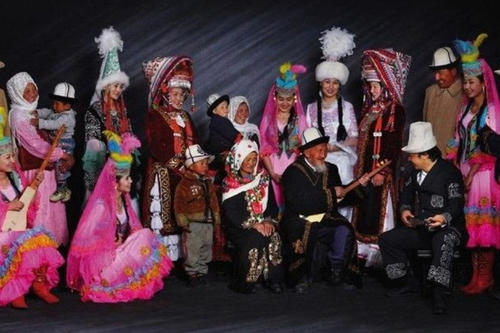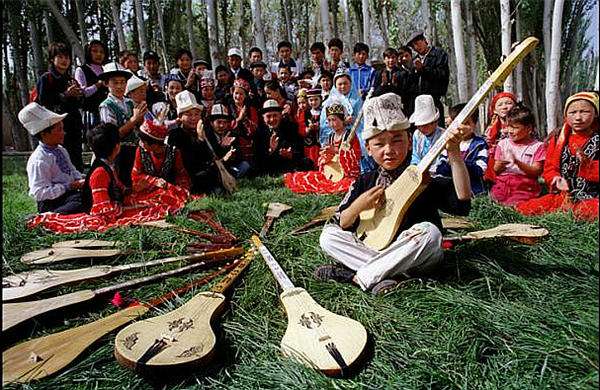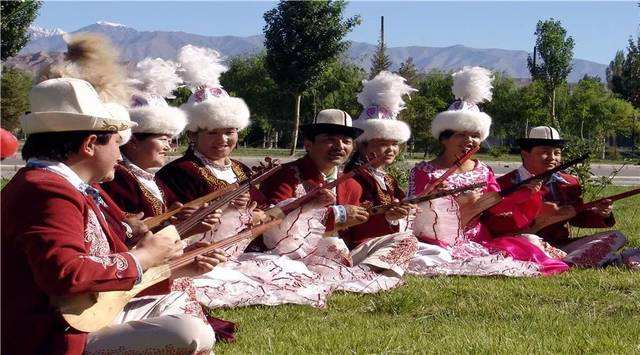Kirgiz women rolling felts
3 min readThe Kizilsu Kirgiz Autonomous Prefecture, with the Kizilsu river running through it, is the westernmost autonomous prefecture in China as well as the only autonomous prefecture named after the Khaklhas. Currently, there are over 140,000 Khaklhas in the prefecture, making up 80 percent of the total Khaklhas in China. They are mainly engaged in husbandry, agriculture and handicraft industry. Women here are good at embroidering and making felts. Apart from those living in Hotan, Guma, Yarkent, Yengisar, Tashkorgan, Konasheher, Uqturpan, Aqsu, Onsu, Bay, Yecheng, Mongolkure, Tekes, Tokkuztara and emin there are also over 100 families in Wujiazi Township in Fuyu County of Heilongjiang Province, the northeast corner of China; they moved there under the order of the Qing government in the 18 century.

In 731 AD, Chang’ an, the capital of the Tang Empire established a close political relationship with Xiajiasi in the Yenisey River Valley. Emperor Xuanzong of the Tang Dynasty wrote the inscription which was then carved on the stele of kl-tegin both in han characters and ancient runic script of the khaklhas and had it erected on the bank of the yenisey river At the end of the 19 century a group of scholars from Russia and denmark discovered on the Orhon and the Yenisey River Valley many steles with ancient Turkic script on them According to the famous Denmark linguist Thomson they were characters of the turk. Due to the look similar to the runic script used by the ancient nordic, this kind of character was called the ancient turkic runic script and also since the steles were discovered in the orh and the Yenisey River Valley, it was also called the Orhon -Yenisey script. These are living fossils that reflect the friendly exchange between the ancestors of the khakhas and the Tang Dynasty. Earlier legend says that the descendants of Li ling, the famous general of the Han Dynasty, and the ones of his five thousand soldiers became a branch of the Khaklhas They were more favored by the tang Empire due to their dark hair and eyes similar to the appearance of the han people and were regarded by the tang empire as a member of the same clan and received special grant. Emperor Xuanzong said to the envoy of Xiajiasi, People of your kingdom and my subjects belong to the same clan, not like the people of other vassal kingdoms.

The Kirgiz ethnic group, originated from Jiankun of the Qin(221 bC to 206 BC) and Handynasties, became defenders in the north for the Eastern Han Dynasty in 87 AD It was called Hugu or Hegu during the three Kingdoms period(220 Ad to 280 AD) and Xiajiasi during the Tang Dynasty. They fought for the Tang empire against the turk army many times with illustrious military exploits. In 947 AD it became a vassal state of Qidan, and was called respectively Jilijisi, Qierqisi and Bulute during the Yuan(1206 AD to 1368 AD), Ming (1368 AD to 1644 AD) and Qing(1616 AD to 1911 AD) dynasties. Over the past two thousand years, as one of the most ancient ethnic group of China, the Khaklhas has made important contributions to maintaining the stability and unity of China.









